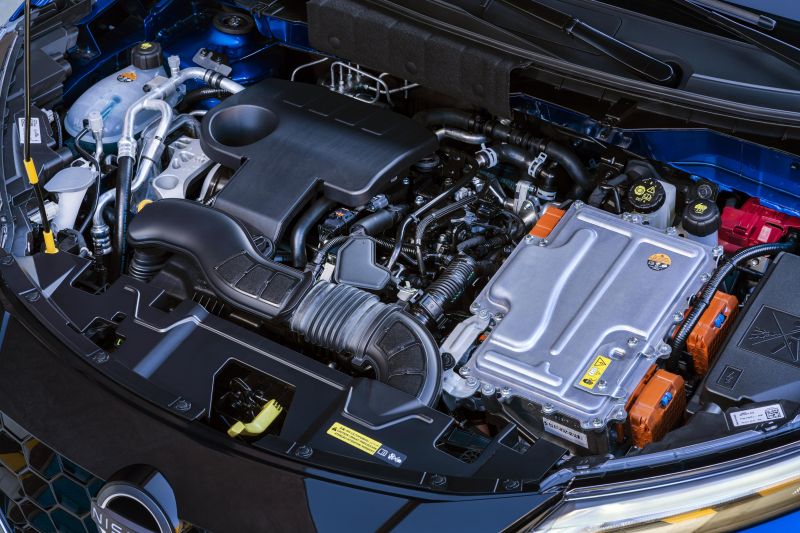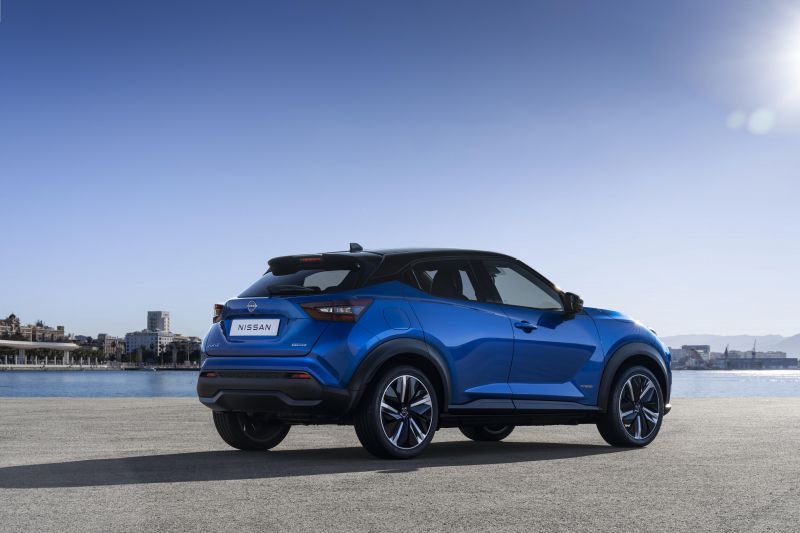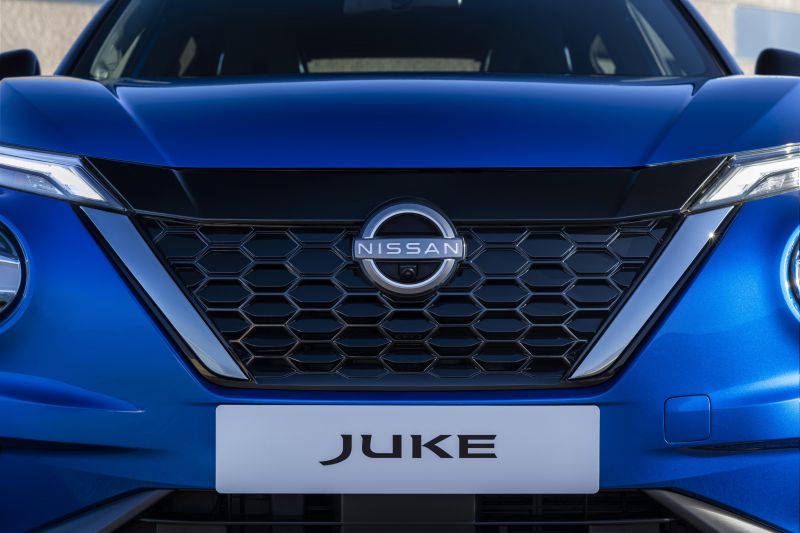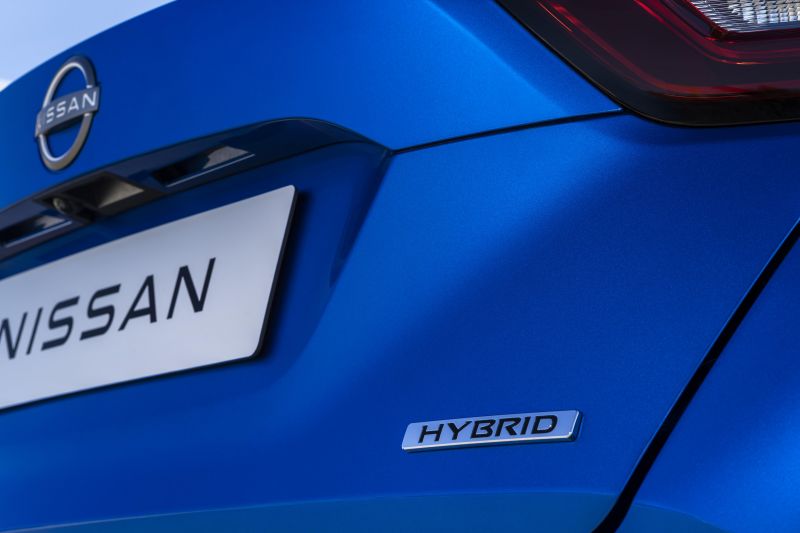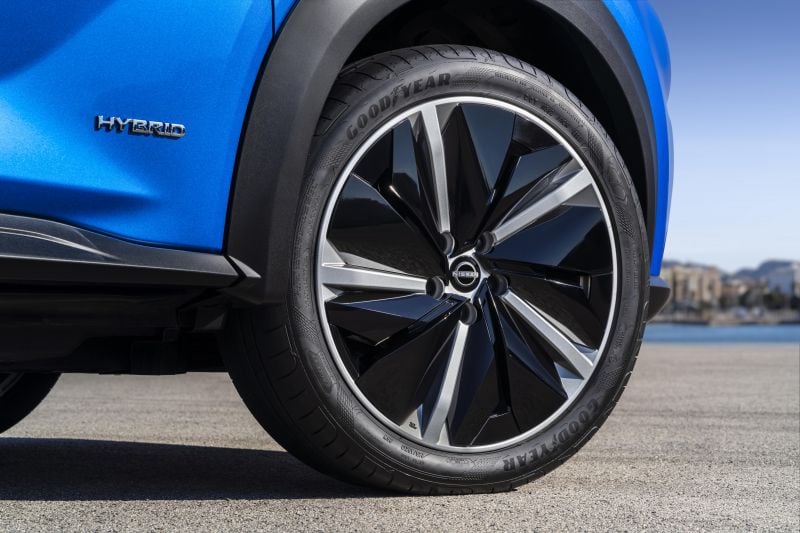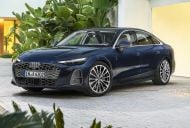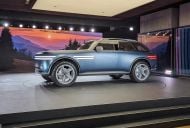Nissan Europe has revealed its latest electrified offering, the 2022 Nissan Juke Hybrid, but it won’t be coming to Australia any time soon.
A local Nissan spokesperson confirmed the Juke Hybrid currently “isn’t on the cards” for an Australian introduction.
Powering the Nissan Juke Hybrid is a 1.6-litre naturally-aspirated four-cylinder engine producing 69kW of power and 148Nm of torque, along with an electric motor producing 36kW and 205Nm, a 15kW high-voltage starter-generator, an inverter and a 1.2kWh water-cooled battery pack.
If this all sounds a little familiar, it’s because this is the same hybrid set-up that’s used in the Renault Captur, Arkana and Clio E-Tech hybrid models.
Nissan doesn’t list a total system output, but Renault indicates the hybrid powertrain produces a total system output of 104kW.
The Japanese automaker also indicates the hybrid powertrain in the Juke Hybrid has a claimed combined fuel consumption of 5.2L/100km.
It’s worth noting this isn’t an e-Power hybrid system like the one used in the Qashqai and X-Trail. These powertrains exclusively send power to the wheels electrically, with the internal-combustion engine acting as a generator.
Just like Renault E-Tech hybrid models, the Nissan Juke Hybrid has the same “low-friction multi-modal gearbox” that uses dog clutches instead conventional synchroniser rings to shift between four internal-combustion gears and two electric gears.
Renault says this clutchless transmission is “F1 inspired”. It’s said to be controlled by an advanced algorithm that manages the shift points, battery regeneration, and different hybrid modes.
Another hybrid system that has a similar transmission is Lexus’ Multi Stage Hybrid system that’s used in the LC500h sports coupe.
This Lexus hybrid system in particular combines a 3.5-litre V6 petrol engine, an electric motor and lithium-ion battery pack to a four-speed automatic transmission at the rear of the hybrid transmission.
Owners of the Nissan Juke Hybrid are said to be able to reach speeds of 55km/h using all-electric power before the internal-combustion engine kicks in.
Nissan’s engineers also claim they achieved up to 80 per cent of an urban drive in the pure EV mode.
The Nissan Juke Hybrid comes with a drive mode selector that allows owners to shift between Eco, Normal and Sport modes.
Changing through these drive modes alters the steering weight, climate control operation, accelerator pedal response, regenerative braking behaviour and battery state of charge.
There’s also an e-Pedal system, just like the all-electric Nissan Leaf, that allows owners of the Juke Hybrid to almost one-pedal-drive it.
This e-Pedal system slows the Juke Hybrid to around 5km/h and the brake pedal is required to make the car fully stop.
An external change to the Nissan Juke Hybrid compared to the regular Juke is its hexagonal front grille insert with active shutters and a gloss black strip.
There are also hybrid badges on the grille, front doors and tailgate.
Other changes are the front tyre spoilers have been repositioned and the rear spoiler has been re-profiled to both achieve a cleaner airflow. The rear axle also has a cover which smooths the airflow under the car.
There’ll be two-tone 17-inch alloy wheels, as well as Nissan Ariya-inspired 19-inch two-tone aero wheels.
Inside, the Nissan Juke Hybrid receives changes to the instrument cluster, as well as e-Pedal and EV mode buttons.
The boot space has also been reduced to 354L with the rear seats upright, which is 68L less than the regular Juke due to the battery pack. With the seats folded, the Juke Hybrid has a boot capacity of 1237L.
Potential European owners will get the chance to buy the Nissan Juke Hybrid when it goes on sale in their summer (June to September 2022).
For now, Australian Nissan Juke models will continue to be solely offered with a 1.0-litre turbocharged three-cylinder petrol engine producing 84kW of power and 180Nm of torque.
It’s mated to a seven-speed dual-clutch transmission and sends power to the front wheels only.
MORE: Everything Nissan Juke





